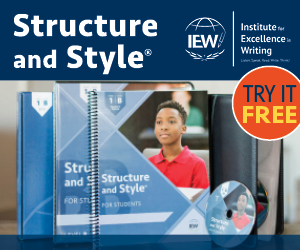Adapting Curriculum for Your Child with Special Needs
by Judi Munday, M.A.; M. Ed.
Parents who teach more than one child find it challenging to individualize their teaching material when teaching a child with special needs. There is too little time, and there are few guidelines for choosing “what works” when the child’s particular strengths and weaknesses create a poor fit between the book and the learner. Students with disabilities vary widely in their physical and emotional development as well as in their abilities to be attentive. Clearly, one size does not fit all, and students with special needs often cannot use material “as is.” Prepackaged curricula available for homeschools often do not include directions on how to adapt or modify teaching content, provide alternative strategies, or give varied levels of assessment.
What can you do? It can take a lot of effort to individualize, but it doesn’t have to! Since students with special needs don’t always progress a full year in academic growth, the real issue is just HOW to ensure that your child makes progress. There are those end-of-the-year assessments that make it risky to alter the content! What if your student does not score at the twenty-third percentile? The good news is there are easy-to-learn adaptations that will enhance your teaching skills for all your children without taking an excessive amount of time to implement.
Accommodations and Modifications
Accommodations and modifications are adjustments to curriculum that are designed to help ensure your students can acquire new learning and show what they know. Accommodations do not change the level of difficulty. They are adjustments to setting, timing, learning styles, presentation, student output, and teacher input. Modifications do change the level of difficulty. They alter quantity, instructional level, materials, and student output. You must discern when to accommodate and when to modify.
Rewording
There are several critical tools that can help you to adapt curriculum to the appropriate level for your student with special needs. Many standard textbook questions are at a level of thinking beyond the child’s ability. Bloom’s Taxonomy can help. It is a handbook chart that breaks down the level of cognitive challenge with wording at the appropriate level. Simply by rewording, you move the difficulty level up or down, and no other tools are required. It is a power-tool you can use that equips you to easily adapt the level of oral and written content. There is no need to prepare in advance.
Special Needs: Using Multi-sensory Work
Performance-based tasks are a powerful teaching alternative. Instead of emphasizing paper-and-pencil school work, the use of well-chosen activities can permit a child to work in his area of strength, such as art or performance. The activities allow more creativity and the use of multi-sensory, hands-on work. Performance-based activities link classroom activity to real life. They are fun, but can you grade a speech or art project? Yes!
Performance-based instruction can be graded with rubrics. A rubric is a graph or table-like chart that specifies exactly what elements of a task will be evaluated and describes mastery for each attribute. This way of grading with objective data is readily understandable to the student.
As you score the work together, ALWAYS begin the review with praise.
“Finally, brethren, whatsoever things are true, whatsoever things are honest, whatsoever things are just, whatsoever things are pure, whatsoever things are lovely, whatsoever things are of good report; if there be any virtue, and if there be any praise, think on these things.” (Philippians 4:8)
Organizing a Curriculum Special Needs
Additional adaptations that have proven effective for students with special needs include graphic organizers. Graphic organizers are one-page worksheets that a parent or student may fill in. The organizer is usually prepared in a chart-like format (such as NBA Playoff charts). Typically, the parent may use software to generate a blank form and work with the student to fill in the data. More advanced students may utilize software to generate their own graphic organizer as a study tool. Why use graphic organizers? They can be used for almost every subject at almost every grade level. They are especially useful for students with special needs because they require less writing, reinforce key concepts, and permit students to see a visual representation of abstract information (or complex content) relationships.
Incorporating Technology
Assistive technology is another important option for adapting curriculum. With available technology, students can now dictate to a computer instead of putting work down on paper. Text-to-speech programs permit students to listen to textbooks, web content, and even scanned documents. Touch screens and adaptive communication devices enable students to communicate more effectively. Calculators and online math software allow students to practice math independently and receive immediate feedback. There are even online dissection programs for science! The Internet offers an endless array of teaching videos―from “how to measure a board” to “how to solve a calculus problem.” DVD and Blue-ray options open countless doors to new content for poor readers and students who need visual reinforcement for learning.
Conclusion
Summing it up, there are several powerful strategies that effectively adapt curriculum for students with special needs. Bloom’s Taxonomy adjusts levels of difficulty for all learners. Performance-based tasks move beyond paper and pencil and enable students to work around weaknesses. Rubrics help parents give a concrete description of mastery learning and help students recognize excellence. Graphic organizers provide critical support for students who struggle with abstract concept and complex content. Technology is an incredible asset when used wisely and appropriately. With these simple tools, it is possible for parents to adapt curriculum for students with special needs.
Judi Munday is a special-needs educational consultant. She serves families of children with a wide variety of special needs in diagnostic assessments, phone and one-on-one consultations, tutoring, and support for homeschoolers. This article first appeared in Virginia Home Educator.










